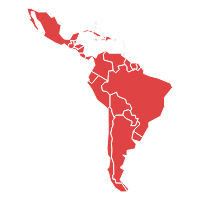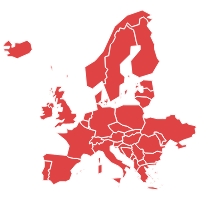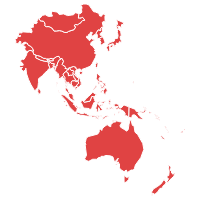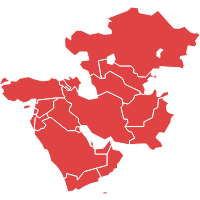Location
Hepatocellular Carcinoma Disease Pipeline Drugs Assessment: Clinical Trails Analysis, Player Profiles, Collaborations, Key Targets, Geographic Focus, and Data Publications, 2018
Hepatocellular Carcinoma Disease Pipeline Drugs Assessment
Overview:
Hepatocellular Carcinoma is the most common primary tumor of liver. It is caused to the people who are having underlying liver diseases such as hepatitis B or C virus, Cirrhosis and non – alcoholic fatty liver disease. HCC does not cause any symptoms in the early stages of diseases. Some of the symptoms of HCC includes loss of appetite, weight loss, nausea and vomiting, upper abdominal pain and swelling, jaundice, white and chalky stools etc.
HCC can be prevented by taking hepatitis vaccination. HCC can be diagnosed by blood tests, CT scan, MRI, Liver tissue biopsy. General treatment of HCC includes liver transplantation, surgery, Radiation Therapy, Transcatheter Arterial Chemoembolization, Brachytherapy, Targeted Drug Therapy, Palliative care
Segmentation:
By Trial Phase, Hepatocellular Carcinoma pipeline drugs are segmented as:
- Preclinical Trials
- Phase 1
- Phase 2
- Phase 3
- Phase 4
By Company, Hepatocellular Carcinoma pipeline drugs are segmented as:
- Eisai Inc.
- Astellas Pharma Inc
- Pfizer
- Astra Zeneca
- Hoffmann-La Roche
- GlaxoSmithKline
- Oncozyme Pharma Inc.
- Novartis Pharmaceuticals
- Eli Lily & Co
- Bristol-Myers Squibb
By Drugs, Hepatocellular Carcinoma pipeline drugs are segmented as:
- Regorafenib
- SorafenibTosylate
- Lenvatinib
- Sorafenib
- Pentamidine
- Brivanib
- Capecitabine
- Ramucirumab
- Others
By Route of Administration, Hepatocellular Carcinomapipeline drugs are segmented as:
- Oral
- Parenteral
Â
Space Analysis:
- In September 2017, Onxeo S.A released the topline results of phase III Relive trial of Livatag (Doxorubicin Transdrug)in adult patients with unresectablehepatocellular carcinoma (HCC). Results determined that the overall safety and tolerability of Livatag in Relive was favourable with fully manageable toxicity profile in both groups of Livatag20mg/m² and 30mg/m²) and also in patients who has undergone longest treatment period. Thw overall tolerability was comparable to the one observed in comparative group.
- In July 2017, Eisai Inc submitted a supplemental New Drug Application to U.S. FDA for first line use of its lenvatinib (Lenvima) a multiple receptor tyrosine kinaseinhibitor(including fibroblast growth factor receptors [FGFR] 1 – 4), in patients with hepatocellular carcinoma (HCC).
Report Description:
Hepatocellular Carcinoma Disease Pipeline Drugs Assessment report studies the various therapeutics under clinical development for Hepatocellular Carcinoma treatment along with targets for various drug candidate. The report provides plethora of information pertaining to trail phases, companies involved in the Hepatocellular Carcinoma disease pipeline drugs development. This report studies the dynamics of the Hepatocellular Carcinoma Disease Pipeline Drugs i.e. drivers, challenges and opportunities which are significantly impacting the product development. The report provides various information pertaining the clinical trials such as designation, grants, patents, and technology among others. Moreover, the report on Hepatocellular Carcinoma disease pipeline drugs assessment comprehensively presents the geographic location, trial status information along with key players involved in the therapeutics development.
Key Features of the Report:
- Provides the information related to universities and research institutes working in the therapeutics development
- Report comprehensively covers the all active and discontinued studies
- Studies the entire pipeline with special emphasis on companies actively involved in the therapeutics development
- Presents the prominent targets for drug development in each stage of clinical trial
- Provides the in-depth analysis on the each drug candidates in the clinical trial phases
GEOGRAPHY

Key Features of the Reports
- The report provides granular level information about the market size, regional market share, historic market (2018 to 2022) and forecast (2023 to 2029)
- The report covers in-detail insights about the competitor’s overview, company share analysis, key market developments, and their key strategies
- The report outlines drivers, restraints, unmet needs, and trends that are currently affecting the market
- The report tracks recent innovations, key developments and startup’s details that are actively working in the market
- The report provides plethora of information about market entry strategies, regulatory framework and reimbursement scenario
- The report analyses the impact of socio-political environment through PESTLE Analysis and competition through Porter’s Five Force Analysis in addition to recent technology advancements and innovations in the market

Frequently Asked Questions
2021 is the base year and 2028 is the forecast year.
The report covers the five regions and 15+ countries market data: North America (United States, Canada), Europe (Germany, France, Italy, Spain, and United Kingdom (UK), Asia Pacific (China, India, Japan, Australia & New Zealand), Latin America (Brazil, Mexico, Argentina) and Middle East and Africa (Saudi Arabia, United Arab Emirates, South Africa).
In our report, we provide 12-15 market players’ information into the report. However, based on the client’s request we will provide additional country and regional market players information as well.
[urltag url='request-table-of-content']
Â
- Eisai Inc.
- Astellas Pharma Inc
- Pfizer
- Astra Zeneca
- Hoffmann-La Roche
- GlaxoSmithKline
- Oncozyme Pharma Inc.
- Novartis Pharmaceuticals
- Eli Lily & Co
- Bristol-Myers Squibb




